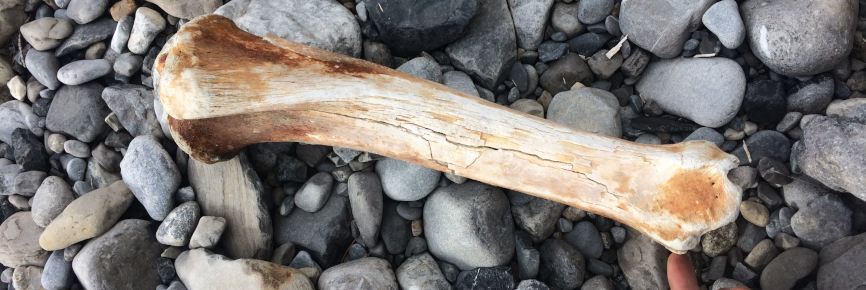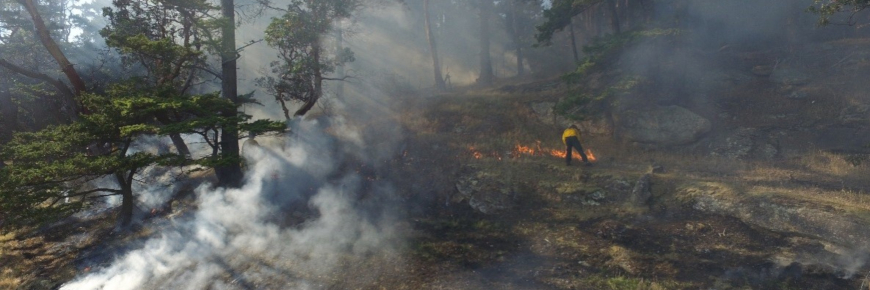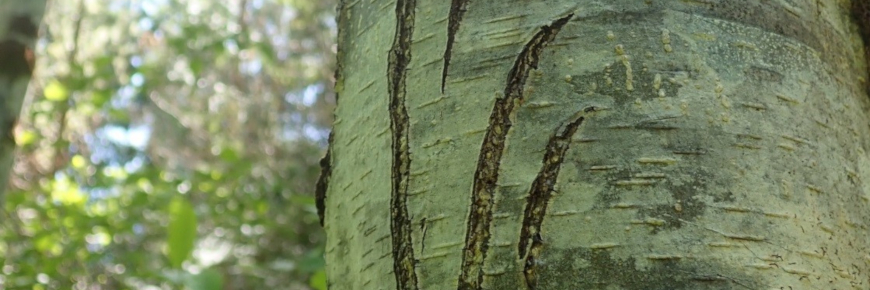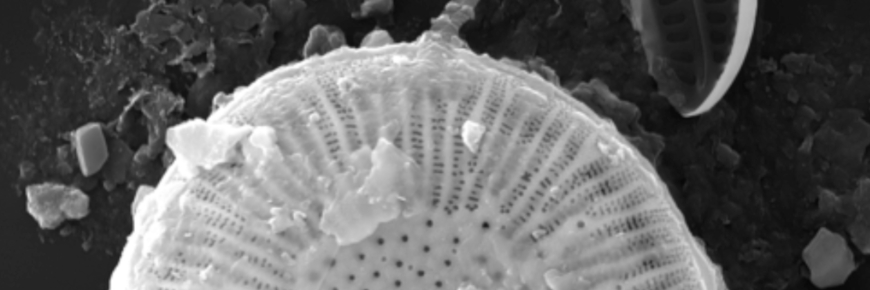Reading nature: finding the big stories in small things
Nature is not always an open book. It takes skill (and sometimes laboratory equipment) to unearth the hidden dramas behind commonplace things.
An old bone, a bit of charcoal, a scatter of pollen grains, some scratches on a tree… most of us might pass by these things without even noticing them. But scientists use them to build a picture of an ecosystem and the creatures in it.
“Nature and books belong to the eyes that see them,” said the 19th-century writer Ralph Waldo Emerson. By uncovering the stories hidden in nature’s miscellany, Parks Canada staff can better understand and protect our natural places.
1. An old bone takes us home on the range.

It’s cracked and weathered and looks very old. What does this bone say about the animal it once belonged to?
To find out, staff at Banff National Park sent this bison bone (found on a Banff creek bed) to Parks Canada’s terrestrial archaeologists. They in turn sent a small fragment to a lab to be carbon-dated and analyzed.
Not only did the bone turn out to be a genuine relic—2100 years old—but it provided valuable information about the bison’s diet. By analyzing the bone’s collagen content, the scientists were able to estimate the ratio of mountain versus prairie grasses eaten by the animal over its lifetime. This bison apparently spent most of its time eating (and living) in the mountains.
Historically, the range of bison included both the plains and the mountain regions. Throughout their range, bison were key grazers and vitally important to Indigenous peoples. Now, after an absence of about 140 years, Parks Canada has restored bison to the eastern slopes of Banff National Park as part of landmark reintroduction project.
2. Charcoal and pollen evoke an ancient tree-grassland community.

A lake bottom is a kind of muddy archive, a deep dive into an ecosystem’s past—and sometimes a culture’s past.
Scientists take “cores” of lakebeds and ocean bottoms by sinking a tube into the sediment to draw up samples. They then analyze the core’s contents to get a picture of vanished landscapes. Pollen grains, for example, will tell them what plant species flourished at a particular time. Charcoal residue can tell how frequently fires occurred.
Over several years, Parks Canada ecosystem scientist Marlow Pellatt and his team collected lakebed cores in southern Vancouver Island and the southern Gulf Islands. They wanted to learn more about the endangered Garry oak meadow ecosystems of the region.
The Garry oak ecosystem (a tree-grassland community) depends on regular fires to sustain it. Without fire, it often turns into conifer forest. Dr. Pellatt’s analysis of pollen in the cores indicated that the Garry oak ecosystem remained fairly constant for a 5000-year period even though the broader region was getting cooler and wetter for much of this period. Natural fires should have been decreasing… and yet the charcoal fragments deposited in the cores told a story of regular fire events.
The team put their findings together with other kinds of analysis (of tree rings, for example) to add to the growing body of evidence for cultural prescribed burning practices. For thousands of years, Indigenous peoples were using fire to maintain the open structure of the Garry oak ecosystem. An open structure would have increased the yield of edibles—root vegetables, berries, seeds and other forage plants—as well as keeping the landscape open for habitation and hunting.
But the practice of cultural burning was suppressed by the province’s Bush Fire Act of 1874.
Parks Canada has re-introduced prescribed fire of Garry oak ecosystems at Gulf Islands National Park Reserve. The practice is helping restore an “eco-cultural landscape” of immemorial importance to Indigenous peoples.
3. Tree scratches and berry-rich scat… Ursus americanus is in the neighbourhood!

“Scat” is the scientific word for poop. The scat we're talking about here has berries in it—salal berries, to be exact. If you put the scat together with the tree scratches, you get Ursus americanus, the black bear.
Ian Cruickshank, Resource Management Officer at Pacific Rim National Park Reserve, took the above picture and often leads tracking walks at the park. “Along with camera traps,” he says, “animal tracks and signs give us a non-invasive way to learn about the wildlife in our midst. The key here is that we can learn much about the animals without them seeing us—and without us influencing their behaviour.”
4. Diatoms produce vital monitoring data… not to mention oxygen.

Diatoms, being microscopic, keep a low profile. But they also help keep us alive.
These single-celled members of the algae kingdom are encased in transparent shell-like “frustule,” made of silica. Like plants, they remove carbon dioxide from the air and convert it into oxygen. Diatoms are responsible for between 25 and 45 per cent of the air we breathe.
Both freshwater and marine diatoms are highly valuable as markers of water quality. Certain species can tolerate only certain ranges in temperature, oxygen, salinity and acidity. They can thus give scientists a very accurate picture of water conditions, past and present.
For example, in Riding Mountain National Park, Dr. Marlow Pellatt and collaborators have examined how phosphorous has changed in Clear Lake over time—and how this change affects the trophic structure (how productive or green the lakes is) in relation to phosphorous levels contributed by human activities such as wastewater treatment and agriculture.
Diatoms have been used to study water quality and ecosystem change in many national parks and national historic sites, including Pacific Rim National Park Reserve, Wood Buffalo National Park and Lachine Canal National Historic Site.
- Date modified :